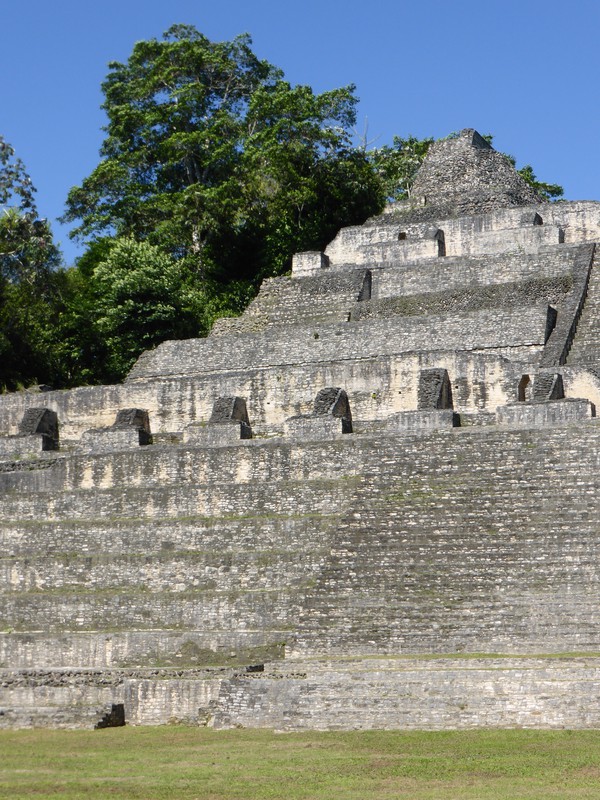
The journey to Caracol, Belize's most impressive Mayan ruins, used to be one of the most intrepid four-wheel-drive journeys you could take in this part of the world. Tucked away in the thick rainforest near the Guatemalan border in a remote corner of western Belize, the ruins were discovered by chance in 1937 by a wandering horseman called Rosa Mai, who was out looking for mahogany and cedar; the remains of this once bustling metropolis had lain undisturbed in the rainforest for 1000 years, ever since the Mayans had abandoned the city following an extended drought. Although the British and Americans surveyed the site and took a few choice finds for their own museums, the site – which was by this point buried beneath a millennium of rainforest growth – was only excavated properly from the early 1980s on. For those who managed the journey in those early days, it was a proper wilderness trek, and it's no picnic even today.

It's compounded by the fact that the 52-mile drive from San Ignacio passes though some pretty lawless country, and there have been attacks in past years on tourist trips by bandits popping over from Guatemala. There is now a British Army base in the area that provides a daily escort to and from the ruins, departing from their base in the Mountain Pine Ridge Forest Reserve at 9.30am and returning at 2pm, and since the British presence the attacks have stopped, but this is still not an area to be sniffed at. So even though the road is better than it was – it's still for four-wheel-drives only, but you can drive it in two to three hours rather than two to three days – Caracol remains a remote ruin that is visited by relatively few tourists.

After the energetic Indiana Jones saga of the Actun Tunichil Muknal cave, we figured that visiting Mayan ruins in a remote rainforest would be comparatively relaxing, so we booked a trip with the same company in San Ignacio and set off with our tour guide for the day – an affable and knowledgeable local called Diego – and three other tourists, plus the driver, in a 15-seater four-wheel-drive bus. The skies were pure blue, the seats were comfortable, and as we strapped in I had a good feeling about the world. I love ruins, and these sounded pretty amazing.
End of Transmission
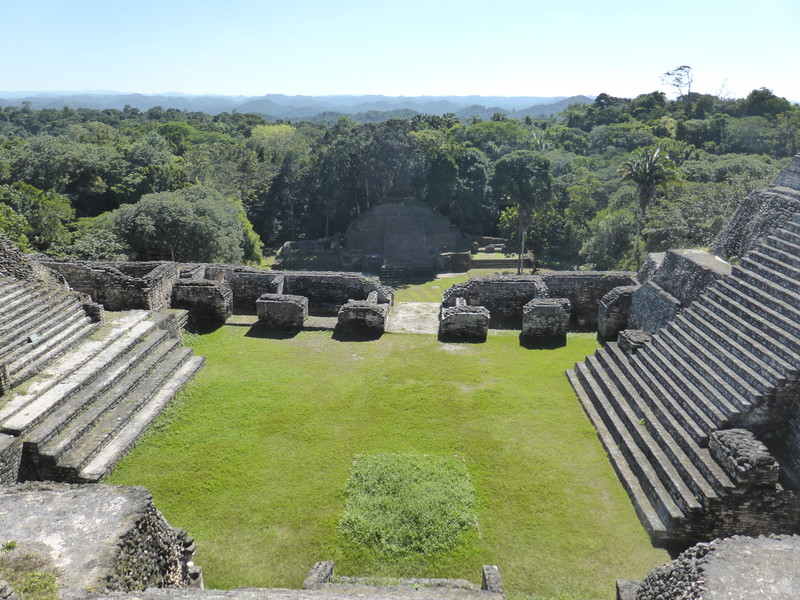
The drive to Caracol passes through the Mountain Pine Ridge Forest Reserve, and I have to say I fell in love with the place. As you drive south from San Ignacio and into the reserve, the landscape is all tropical rainforest, like most of the rest of the country, but after you pass through the reserve entrance, the vegetation suddenly changes, and within a couple of minutes the dark canopy of Belize's secondary rainforest is gone and the pine forest starts. This sudden change isn't due to altitude – though the reserve is at a refreshingly higher altitude than the sweatier plains below – but to a change in soil composition. The ground in the Mountain Pine Ridge area is a deep red from the large amount of iron oxide in the soil, and this increased acidity means that traditional rainforest can't grow, and instead only a handful of plant species can survive, including two species of pine and a small number of scrub plants, such as fire grass.
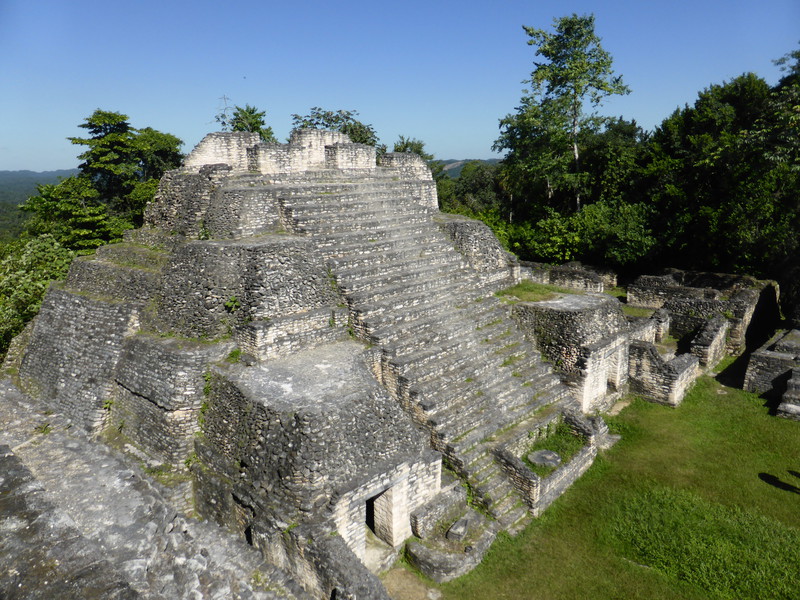
This mix means that fire plays an important part in the lifecycle round these parts, and every year bush fires ravage the area when the sap in the dry pine cones catches fire and all the scrub burns back to charred earth, only to start growing again. The pine trees, meanwhile, survive the onslaught with their tall fire-resistant trunks, so you end up with these two tiers of vegetation – tall pine and low scrub – living far apart and yet in harmony with each other.
As we drove, it struck me that I was falling for the lonesome pines of the Mountain Pine Ridge because this part of the world looks just like the Australian outback (surely no coincidence, seeing as the outback also lives according to a bushfire cycle). The red soil, blue sky and green scrubland is such a beautiful colour combination, and the silhouettes of the pine trees against the sunlight are stunning. I've spent many happy days walking through this kind of landscape, and with the bad road and the remoteness of the whole area, it brought back a lot of good memories. The drive was a delight.

We soon arrived at the army base, where we turned off to visit Río Frio Cave, a large cavern that the Mayans used for shelter (though they didn't use it for anything ceremonial, as it's open at two ends and they only used completely enclosed caves for ceremonies, as they needed the darkness to represent the underworld). It was a nice enough detour, but I couldn't help noticing that we turned away from the army base at 9.20am, just as the convoy was preparing to leave, so by the time we got back to the base, the convoy was gone.
It didn't really matter, as joining the convoy is optional, so we signed in with the officers at the checkpoint and set off on the worst section of the road, crunching our way through a really churned up section that took a few attempts to clear. This was obviously going to be a bumpy ride – Diego told us the roads had only just reopened after some of the heaviest October rains in years – so we held on tight as the pine forest petered out and changed back into tropical rainforest.

It was perhaps 45 minutes from the army base that things started to go wrong. For the last few miles to Caracol the road is sealed – a bit of a surprise after so many miles of gear-grinding madness – and as we rolled along at a good speed, with Caracol in our sights, we reached a small hill and inexplicably started to slow down. The driver, who on some of the gnarlier parts of the churned-up road had earned quite a few cheers, started over-revving the engine in a slightly unnerving way, and despite his enthusiastic punching of the accelerator pedal, we slowly and surely ground to a halt. Thick rubbery smoke started pouring out from the front wheel arches, and the driver shrugged, pulled on the handbrake and jumped out, followed closely by Diego. They looked under the front of the bus, muttered to each other and glanced up at us, just as the acrid stench of Serious Mechanical Failure seeped into the air-conditioned cabin.

'Um, the transmission has run out of oil,' said the driver, poking his head into the bus in a cloud of smoke. 'It looks like we broke a pipe back there, and all the oil has run out.'
'Ah,' we sighed, and jumped out of the bus to take in our surroundings while Diego and the driver wandered down the road to confer in private. We were in the middle of nowhere, somewhere between the army base and Caracol, and the bus was completely dead.
'So here's the plan,' said Diego, returning alone from his conference with the driver. 'We saw some workmen a few miles back, so the driver has gone to talk to them to ask whether we can use their pickup truck to get us to Caracol. And then we can call for another bus to come and pick us up.'

So we sat down and waited on the side of the road, in the middle of nowhere, in bandit country, without an army escort, and without any idea how long we'd be there. And it was at that point that Peta looked down and spotted something metallic in the undergrowth.
'What's that?' I asked as she picked it up.
'It looks like a bullet casing,' she said. 'Look there's another. And another. Wow, there are loads of them. Loads of bullets. Everywhere.'
Which really helped the minutes slip by as we waited to see who would get to us first, the workmen or the bandits.
The Ruins
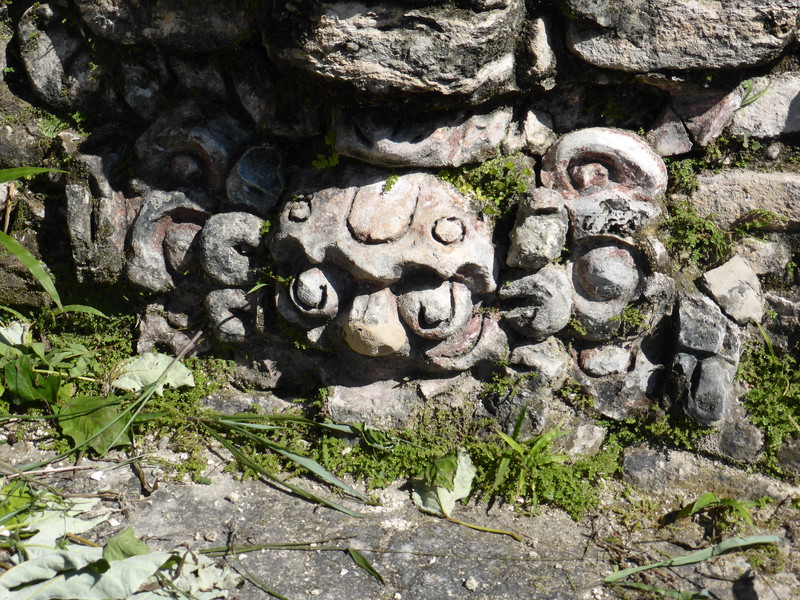
Amazingly, half an hour later a flatbed truck puttered into view, and thanking our lucky stars we grabbed all our stuff and jumped into the back. That last 20 minutes along the road was a hoot; having the wind blowing through your hair is so much more enjoyable than the savage air conditioning that drivers in hot countries insist on turning up to full, and it felt surprisingly apt to be turning up to such a remote site in the back of a flatbed truck.
And what a site! Caracol is such an atmospheric place, and in parts it's hard to tell where the ruins stop and the rainforest begins. This was once one of the biggest and most powerful of all the Mayan cities, and the parts that you can see as a visitor are just a small fraction of the whole site, which at its peak was home to about 150,000 people, more than twice the current population of Belize City.
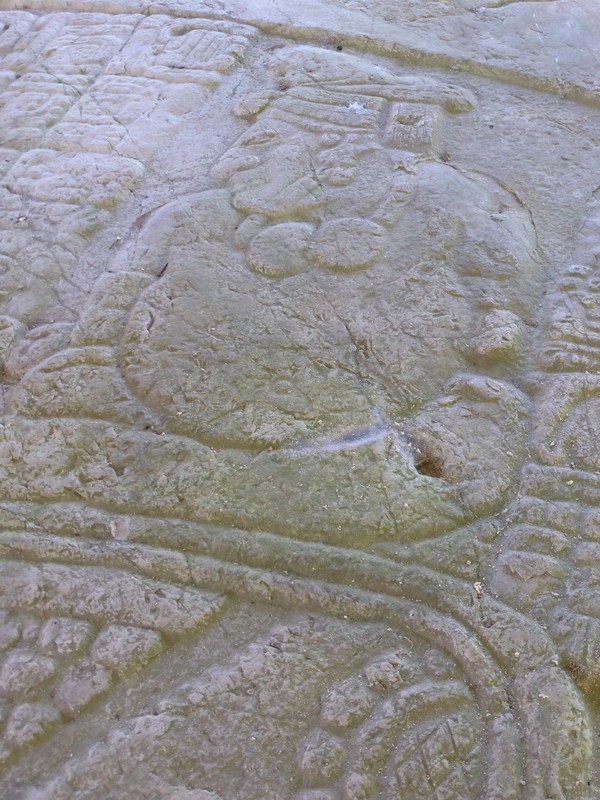
Not only that, but Caracol is home to what is still Belize's tallest building, even though it's over 1400 years old and is buried in the depths of the jungle. At an imposing 43m high – considerably higher than the 25m height of the main pyramid at Chichén Itzá – the Caana ('sky palace') is a three-tiered pyramid that dominates the main plaza, and the views from the summit, over the rainforest canopy to the distant hills in the south of Belize, are absolutely thrilling. They alone are worth the long, arduous journey from civilisation.
And all the while there are practically no people here; we only saw a couple of other tourists in the entire day, and it was a privilege to be able to climb over the ruins while howler monkeys screeched and keel-billed toucans flew through the treetops. One day the Belizeans will upgrade the entire road to bitumen, and then Caracol will become Belize's Chichén Itzá; for now, though, it's the preserve of the lucky few who make the effort to grind through the mud and climb to the top of Belize's first, and only, skyscraper.
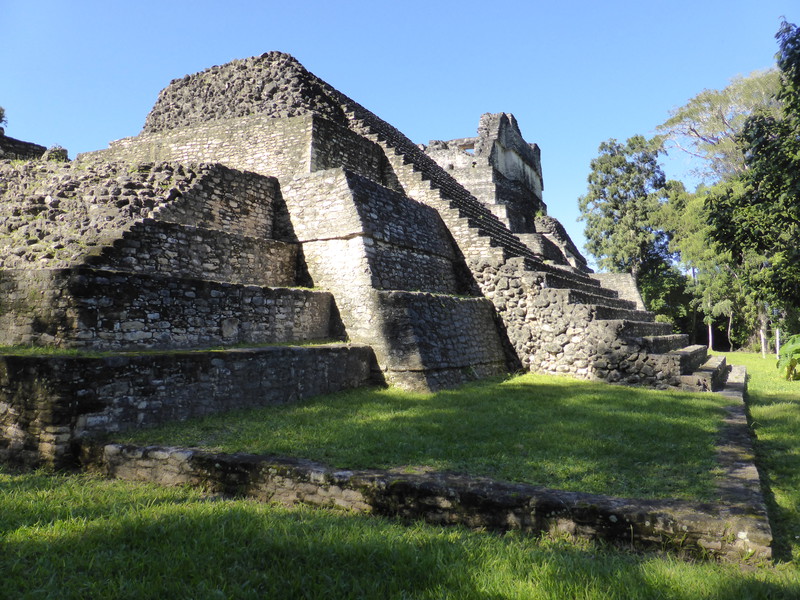
There are, of course, plenty of other buildings and plazas at Caracol, as well as plenty of stelae, the tall stone monuments on which the Mayans carved pictures of rulers, conquered enemies and bloodletting ceremonies, along with the glyphs that give us so much information about their long-lost empire. There are ball courts, tombs, living quarters and altars, as well as countless piles of rubble that are still smothered in 1000 years of rainforest. Excavations still go on each year; Caracol has plenty more secrets hidden away under the strangler figs and moss carpets, and it's hard not to feel like an explorer as you wander under the canopy, in the shadow of the Mayan empire.
Back Home
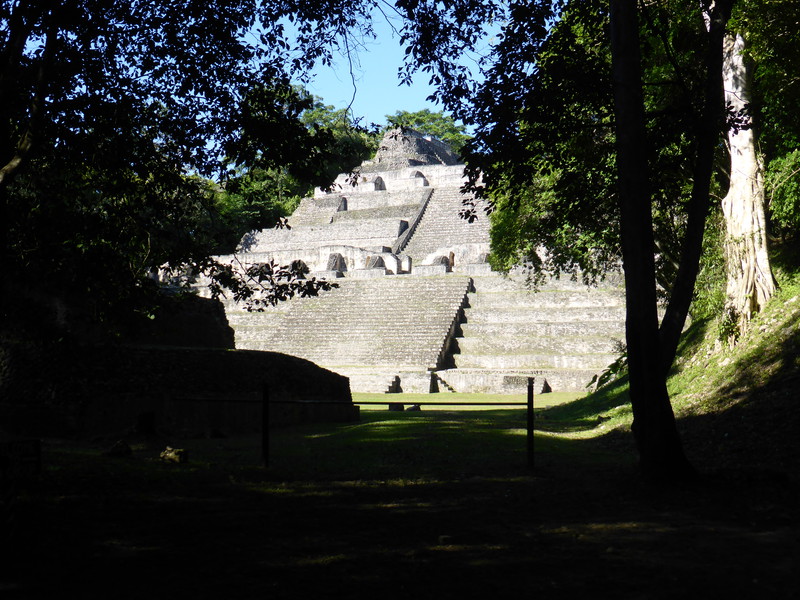
On the tour Diego had turned out to be a genuinely likeable and knowledgeable guide, though even his enthusiasm started to flag when we came back to the visitor centre, well after the army convoy had returned to base, to find that our replacement bus hadn't yet arrived. We were stranded until it did, so we sat and listened to the noises of the jungle as the sun slowly moved across the sky, until finally, at 4pm, a tiny Toyota RAV4 pulled into the car park.
'That can't be it,' we thought, 'there aren't enough seats,' but sure enough this was the only vehicle they'd managed to rustle up, so we had to bunch up with three on the backseat, two on the passenger seat, and Diego standing on the back bumper, hanging off by the tips of his fingers.
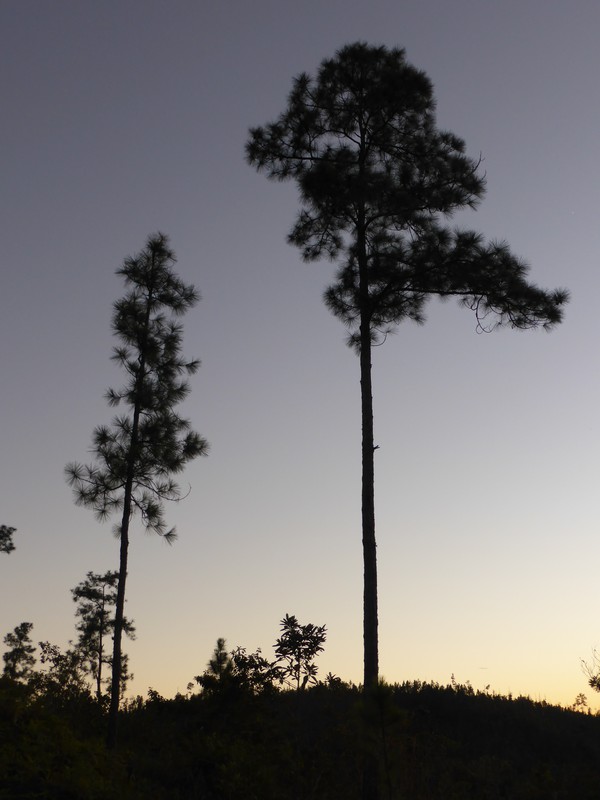
We dropped Diego off at the still-stricken bus, which by this point had been joined by a land cruiser and a tow rope, and then we started the long, slow haul back through the mud. This was a much slower and scrappier affair in the small Toyota than it had been in the rather meatier bus, but there was one massive bonus to all this delay: as we passed through the pine forest once again, after a quick rest stop at the Rio On Pools, the sun dropped below the trees and lit up the sky in a stunning sunset, the black silhouettes of the pines outlined against an airbrushed sky of blues, yellows and reds, while a crescent moon with clear earthshine appeared next to a bright Jupiter and a beautifully clear Orion's Belt that sparkled like jade teeth in the smile of a Mayan princess.
Yes, we were absolutely exhausted when we got back, but I'm so glad the bus broke down. It turned an adventure into an event, and it was – as they say round here without even rolling their eyes – un-Belizeable.